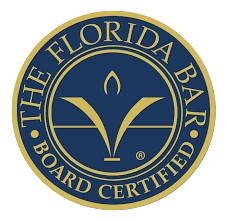When you purchase a vehicle, you trust that it has undergone all standard safety tests required by law, and has passed. While engineers are making daily advancements in the production of vehicles with safety in mind, sometimes these new designs are flawed and will malfunction, which can lead to an accident out of the driver’s control. Other times, it is simply a matter of making cars cheaper, at the expense of safety that ultimately causes death or grievous injury. An accident of this sort would fall under product liability.
At one time, the absence of an airbag was considered a product liability, and it has been through the efforts of product liability law suits that cars have become much safer. Another example during the last decade has been litigation brought against Takata, which produced air bags that shot out shrapnel into the faces of drivers at 200 mph, causing devastating injuries. Similarly, law suits against tire manufacturers whose tires separate and come apart, have been championed by plaintiff product liability attorneys.
When a vehicle is defective, it is often questioned who would be held liable. There is usually a debate whether it was the negligence of the manufacturer or, you could even argue that the car dealership that sold you the vehicle should have tested the car before sale through all federal safety guidelines.
Although it is the manufacturer’s duty to recall all defective vehicles and disclose dangers, they might argue that the cause of accident was due to driver negligence. Another possible response would be that the driver made modifications to the vehicle that caused the design to fail in its intended and tested performance.
There are unlimited possibilities in which a motor vehicle can possess a defective design, however the most common are as listed:
- Air bag deployment defects
- Ignition switch failures
- Brake pedal failures
- Poor steering & suspension
- Defective tires
As mentioned above, in 2013, Takata, an airbag manufacturer, recalled millions of airbags due to their improper production and testing. Upon deployment, these airbags would send flying debris inside the vehicles, caused by misused chemicals and products stored inside of the airbags. The effects of this negligence were catastrophic, and fatal.
In 2010, Toyota issued recalls to millions of their vehicles after several incidents were reported where they drivers stated that their “accelerator had gotten stuck”, which was followed by many accidents with reported deaths. In this particular case, it was unclear whether the pedal was in fact a faulty mechanism, or it was becoming entrapped in the floor mat, which was also considered to be a defective design.
As a driver, there are many precautions you can take to ensure that your vehicle performs properly and is unlikely to become defective.
It is suggested to:
- Stay up to date on your vehicles oil changes (primarily between 5,000 – 7,500 miles)
- Get your tires rotated regularly (between 5,000 – 6,000 miles)
- Keep up to date on vehicle recalls which are updated frequently by the National Highway Traffic Safety Administration (NHTSA)
- Pay attention when your dealer sends you a recall notice and bring your car in to have it repaired
If you, or a loved one, has been a victim of the negligence of a manufacturer or a dealership, or have suffered from an unknown product defect, our attorneys can help fight for your justice. At Rader Law Group, we have handled many cases of product liability and negligence. Call us today for a free consultation 954-913-CASE (2273).








